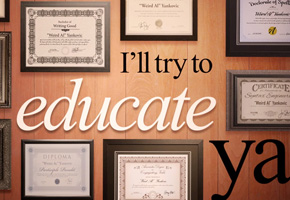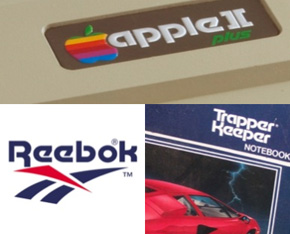Pixel City
Oh look, another blog about design and technology.
Yosemite Review
This button. Click it.
Seriously. Transparency is bullcrap. No, Sir Jony, your OS is not all about "focusing on my content", you're just smearing crap all over the screen. When I have a window open, I want to see that window, not part of what's behind it. You're making what I want to read, harder to read. I want to read what I want to read, not what's behind it. How is that so hard to understand?
I worked for a publisher. Like almost all publishers, we used the cheapest paper possible, but we weren't so cheap as to use paper that you could see through. That makes things worse, not better. Didn't you guys move away from this once already?
I can't wait for brushed metal to come back in OS X 10.11: Pittsburg. (Coincidentally, there is a Pittsburg in California, so that name could work.)
Color and Usability
Interesting article from C. G. P. Grey about how color imacts usability. (Via Marco Arment)
Reasons to Upgrade Your Phone
Not just rationalizations — there are actually good reasons to upgrade your phone sooner rather than later.
- The new phone will be in warranty.
- Flash drives slow down over time.
- Batteries degrade over time.
- Buttons wear out. Probably on all phones, but in particular, the home button and sleep/wake buttons on iPhones seem to wear out a lot as you hit the two-year mark.
- You will be able to run the newest OSs and apps well.
- If you're on a plan where your phone is subsidized and your monthly payment doesn't go down once it's paid off, you're leaving money on the table if you don't take advantage of the ability to upgrade as soon as it's possible.
- iPhones hold their value well, and you'll get more money for it the sooner you sell it.
So... if you can afford to upgrade comfortably, do it!
Inspiration
You don't always get a big "aha!" moment when trying to solve a problem, but when you do, it's pretty sweet.
"... image stabilization was the answer, but the technologies of that time, which you’d find in Final Cut and myriad other video editing programs, were simply unworkable for smartphones. ... image stabilization algorithms typically analyze a movie frame by frame, identifying image fragments common to each. By recording how those shared points jump around across frames, algorithms can then infer how the camera has been moving. By reverse engineering that motion data, software can recreate a new, steadier version of a film clip. Yet every step in that process requires processing muscle. That’s fine for a movie studio, which has massive computers that crank overnight to re-render a scene. It’s ridiculous for a smartphone... Karpenko had an aha moment: Smartphones didn’t have nearly enough power to replicate video-editing software, but they did have built-in gyroscopes. On a smartphone, instead of using power-hungry algorithms to model the camera’s movement, he could measure it directly. And he could funnel those measurements through a simpler algorithm that could map one frame to the next...
From an article in Wired about the creation of Hyperlapse for Instagram.
Name design?
Yes, it exists. This great old (1999!) article popped into my head so I figured I'd add a link to it. I think it's hysterical — a view into an industry that's so nuts it almost reads like satire.
“What a crummy name,” he says. “[Agilent] sounds like a committee name. ‘Who’s your competition?’ ‘Lucent.’ ‘Well, we want to play off Lucent — only we’re agile.’ I mean, if you wanted a name like that, I could come up with that kind of name in about four seconds.”
...
Landor, for its part, is quick to defend its handiwork. “To our critics, I can only say, vive la diffirence, vive the competition and vive individual entrepreneurialism,” says Redhill, in his gentle, grandfatherly voice. “We have the utmost confidence in our model.” To drive home that point, Redhill put me in touch with Darius Somary, the research director who had confirmed to an empirical certainty the allure of names like Agilent. “From a quantitative standpoint, it’s a very appealing name,” Somary told me. “On all the scalar measures of distinctiveness and appropriateness, it tested right off the charts.”
Wine
I occasionally post things here that are not design- or technology-related but are just really interesting. This is one of them — an article about how climate change will affect the grapes grown for wine production. (Via Paris Lemon.)
Great Video about Adobe Illustrator
Fast Company has a great video (19 minutes) about the history and impact of Adobe Illustrator. One of the interviewed subjects is Dylan Roscover, a former Full Sail student, who had his work used in Time Magazine while he was still in school.
Word Crimes
What does it take to make a 3 minute, 44 second video with amazing kinematic type? About "500 hours of work in After Effects, Photoshop, Illustrator and Premiere". Read (and watch) all about it in this post by the creator, Jarrett Heather.


